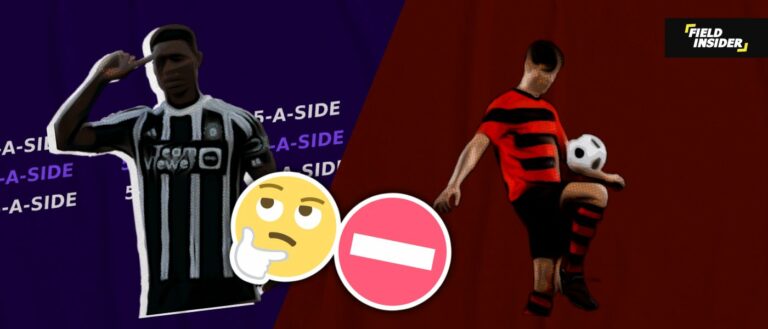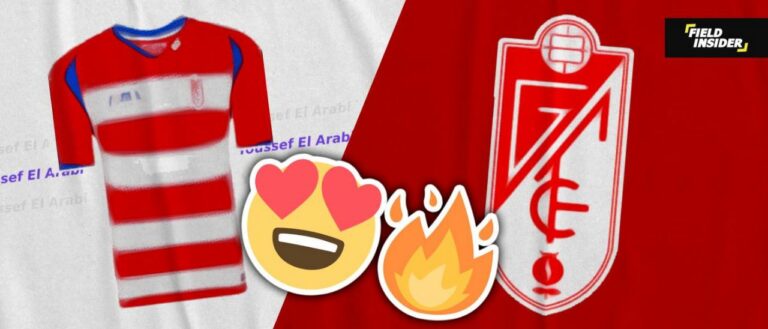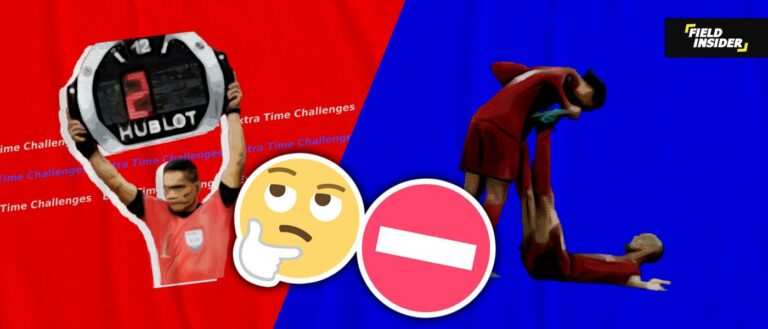The 4-3-2-1 Formation: Complete Handbook
Soccer formations are more than just numbers; they encapsulate a team’s strategy, philosophy, and approach to the game. Among these, the 4-3-2-1 formation, often referred to as the “Christmas Tree” formation due to its distinct shape, stands out for its tactical rigidity and flexibility.
This guide aims to delve deep into the 4-3-2-1 formation, exploring its nuances and how it shapes the dynamics of a match. Understanding these formations can significantly enhance one’s appreciation of the game and its intricacies.
Key Takeaways
| Key Takeaway | Description |
|---|---|
| Understanding the Basics | Explains the formation’s structure and player roles. |
| Advantages of the 4-3-2-1 Formation | Highlights defensive solidity and fluid attacks. |
| Challenges and Weaknesses | Addresses potential vulnerabilities and limitations. |
| Tactical Variations | Discusses strategic adjustments and substitutions. |
| Successful Implementations | Reviews historical success by top teams. |
| Coaching Tips and Recommendations | Provides guidelines for effective formation usage. |
Understanding the Basics
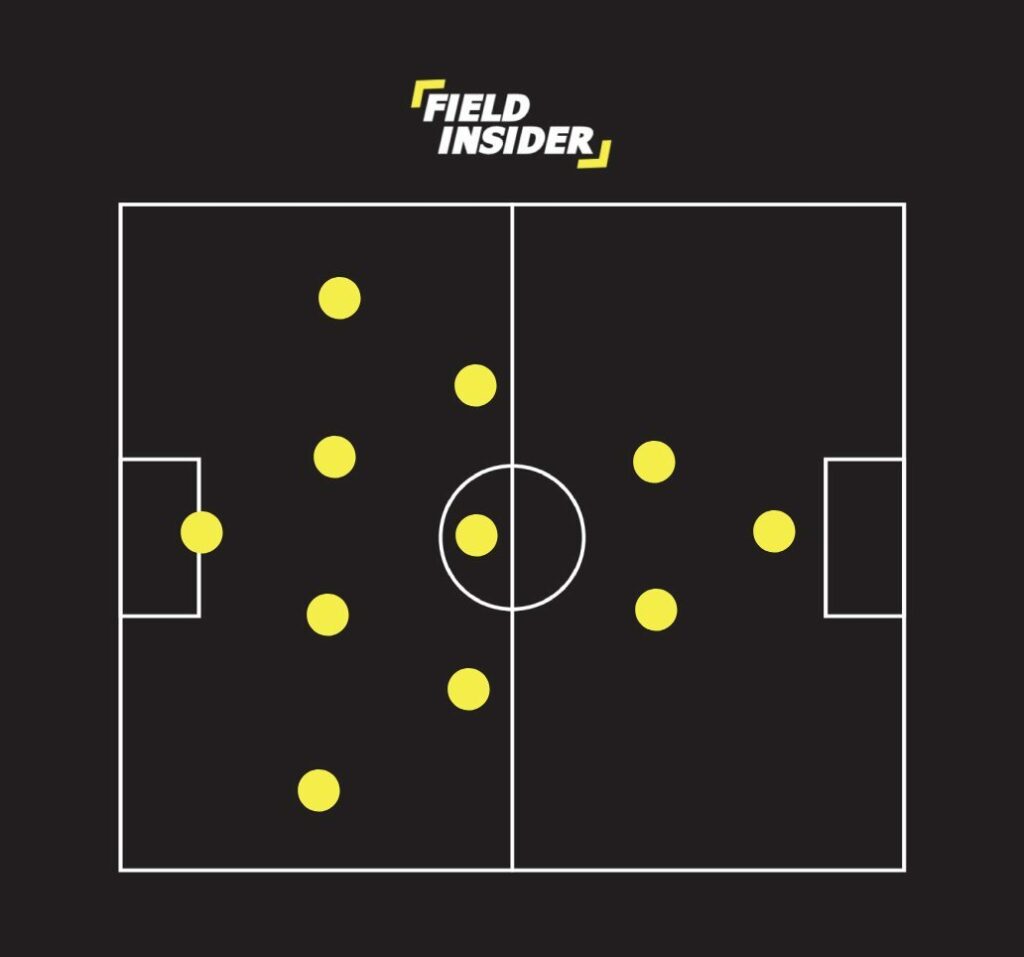
Explanation of the Numbers in the 4-3-2-1 Formation
The 4-3-2-1 formation, commonly visualized as a pyramid, consists of a strategic layout. It begins with four defenders at the base, continues with three midfielders, adds two attacking midfielders, and culminates with a single striker at the top.
This structure supports both a robust defense and a focused attack, making it a versatile choice for teams looking to balance between offensive thrust and defensive stability.
Player Roles and Positioning

Defenders
In the 4-3-2-1 setup, the defenders include two central defenders and two full-backs. The central defenders are crucial for stopping direct threats, while the full-backs often engage further up the field to support midfield activities.
Their role is pivotal in transitioning the ball from defense to midfield, often underpinning the team’s ability to maintain possession and shape.
Midfielders
The midfield trio usually features a defensive midfielder and two central midfielders. This composition is essential for controlling the game’s tempo and distributing the ball effectively across the pitch.
The central midfielders connect the defensive actions with offensive movements, often acting as the pivot points in team tactics (Exploring Midfield Dynamics).
Attacking Midfielders and Striker
The two attacking midfielders behind the striker provide the creative spark needed to unlock opposing defenses.
They are responsible for crafting goal-scoring opportunities and supporting the lone striker, who focuses on converting chances into goals. This tiered approach allows teams to press high when in possession and revert to a compact shape when defending.
Key Principles and Tactics
The 4-3-2-1 formation is designed to fortify the team defensively while allowing flexibility in attack. Its structure supports quick transitions from a solid defensive stance to a dynamic attacking mode, ideal for teams that thrive on controlled, strategic play.
The emphasis on midfield control ensures that the team can adapt quickly to changes in the game’s flow, making it a formidable formation against diverse opponents.
Advantages of the 4-3-2-1 Formation
Defensive Solidity
The 4-3-2-1 formation is renowned for its defensive strength, primarily due to the four-man defense line. This robust setup ensures that the team remains compact and difficult to penetrate.
With the additional shield provided by the defensive midfielder, teams can effectively neutralize opposition attacks, making it a reliable choice for maintaining clean sheets in crucial matches.
Compact Midfield
A three-man midfield in the 4-3-2-1 setup offers excellent control over the center of the park. This compactness forces opponents to use wider areas of the field, reducing their ability to create central attacking plays.
The midfielders can also work closely to support both defense and attack, ensuring the team remains balanced in all phases of the game (Mastering Midfield Control).
Fluid Attacking Movements
Despite its defensive leanings, the 4-3-2-1 allows for fluid attacking movements, thanks to the two advanced midfielders.
These players bridge the gap between midfield and the lone striker, facilitating smooth transitions into the attack zone. Their positioning enables them to either take shots or craft opportunities for the striker, enhancing the team’s offensive output.
Counter-Attacking Opportunities
The structure of the 4-3-2-1 formation is ideally suited for exploiting counter-attacking opportunities. By drawing opponents in and quickly transitioning to attack after regaining possession, teams can catch their opponents off guard.
The pivotal role of the midfielders and the strategic placement of the attacking midfielders and striker ensure rapid progression from defense to counter attack, capitalizing on the spaces left by advancing opponents.
Challenges and Weaknesses

Vulnerabilities in Defense
While the 4-3-2-1 formation is strong defensively, it can expose vulnerabilities under specific conditions. If the midfield is bypassed or outpaced, the back four may face overwhelming pressure, especially from fast, attacking opponents.
This scenario typically occurs when facing teams skilled in quick transition play or when the midfield fails to effectively track back.
Limited Width in Attack
One significant challenge of the 4-3-2-1 formation is its natural tendency to compress the play centrally, which can limit width in attacking maneuvers. Without wide players or when full-backs are constrained defensively, the team may struggle to stretch the opponent’s defense.
This limitation can make the attacking play predictable and easier to defend against, especially by teams that deploy a strong central defensive strategy.
Potential for Midfield Overload
In the 4-3-2-1 formation, the midfield trio must handle various responsibilities, from defensive duties to initiating attacks. However, they can be outnumbered and overpowered by formations that use more midfielders or those that deploy dynamic attacking midfielders.
This overload can disrupt the balance of the team, leading to loss of control in crucial midfield battles and increasing the pressure on both defense and attack.
Strategies for Overcoming Weaknesses
To counter these challenges, coaches need to implement specific strategies tailored to their team’s strengths and the dynamics of the opposition. Enhancing the mobility and versatility of midfielders, encouraging full-backs to participate more actively in the attack.
These adjustments help in mitigating the inherent weaknesses of the 4-3-2-1 formation, making it more effective against varied tactical setups.
Tactical Formations and Full-Back Work Rate
The chart below is based upon the findings of the research study, “Center backs work hardest when playing in a back three: The influence of tactical formation on physical and technical match performance in professional soccer.”

As depicted in the bar chart above, full-backs in formations with four defenders average 505 accelerations per game. This contrasts with those in three-defender formations, who average 512.5 accelerations.
This metric is essential for coaches who employ the 4-3-2-1 formation, indicating the level of intensity required from full-backs in this setup.
The subtle increase in work rate for full-backs in a three-defender formation can influence a coach’s decision when considering the adoption of a 4-3-2-1 system, as it requires a balanced work rate from all defensive players.
Tactical Variations
Adjustments for Different Scenarios
The 4-3-2-1 formation is adaptable, allowing coaches to make strategic adjustments based on the game’s context. When leading, a team might shift to a more defensive posture, possibly pulling one of the attacking midfielders back to reinforce the midfield.
Conversely, if trailing, the formation can be adjusted to be more offensive, such as pushing the full-backs higher up the pitch or adding another forward at the expense of a midfielder. These adjustments ensure the team remains competitive in changing game scenarios.
Role of Substitutions in Altering the Formation
Substitutions play a critical role in dynamically altering the shape of the 4-3-2-1 formation during a match. Strategic player changes can transition the team to different formations like 4-4-2 or 4-3-3 to address specific tactical needs.
For instance, introducing a winger or an additional striker can increase offensive pressure, while bringing in an extra midfielder or defender might help consolidate a lead.
Successful Implementations by Top Teams
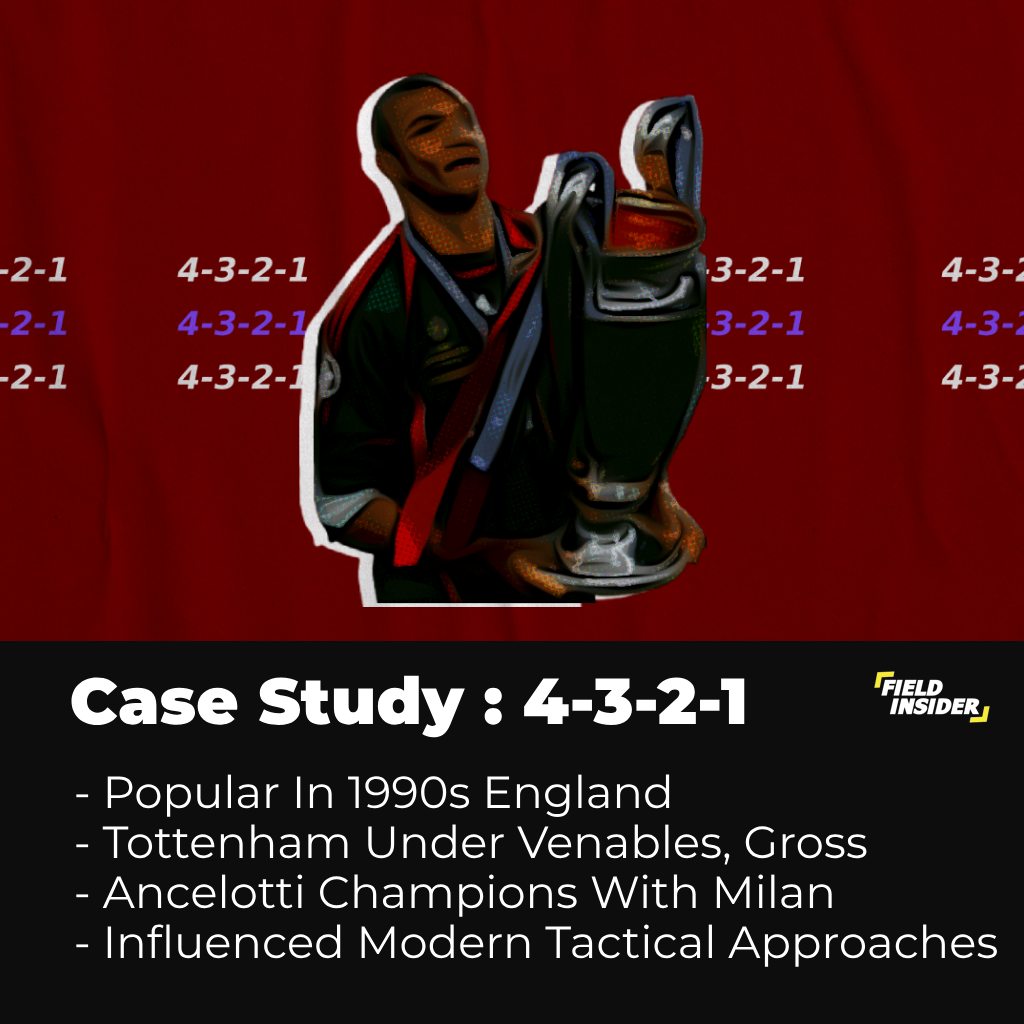
Historical Usage in English Football
The 4-3-2-1 formation, commonly known as the “Christmas Tree” formation, found significant favor in England during the 1990s. Notably, managers like Terry Venables and Christian Gross adopted this formation during their tenures at Tottenham Hotspur.
Its strategic depth allowed for a balanced approach, integrating solid defense with potential for creative playmaking, which made it a preferred setup among various English clubs during that era.
Carlo Ancelotti’s Champions League Triumphs
Carlo Ancelotti’s use of the 4-3-2-1 formation is perhaps the most illustrious example of its effectiveness. During his time at AC Milan, Ancelotti employed this formation to great success, leading the team to two Champions League titles.
His tactical acumen was evident in how he optimized the roles within the formation, ensuring defensive stability while maximizing the attacking potential of his midfielders and forwards. Ancelotti’s adaptation of the 4-3-2-1 allowed Milan to dominate European football with a balanced approach.
Impact on Modern Tactics
The success of the 4-3-2-1 under Ancelotti and its historical significance in English football demonstrate its utility and adaptability. While not as prevalent today, its principles influence modern tactical formations that prioritize flexibility, compactness, and a strong midfield presence.
Teams looking to implement or adapt the 4-3-2-1 can draw on these historical uses to tailor the formation to contemporary football’s evolving strategies.
Coaching Tips and Recommendations

Training Drills to Improve Players’ Understanding of the Formation
| Drill Type | Focus Area | Description |
|---|---|---|
| Positional Play Drill | Spatial Awareness and Positioning | Players are assigned specific zones on the field to maintain their position and shape of the formation. |
| Transition Drill | Quick Defense to Attack | Simulates scenarios where players quickly shift from a defensive stance to an attacking mode, and vice versa. |
| Communication Drill | Enhancing Team Communication | Focuses on improving verbal and non-verbal cues among players to coordinate movements and strategies effectively. |
| Attack vs. Defense | Tactical Application | Sets up an in-squad scrimmage emphasizing the roles of each tier in the formation during live play. |
| Counter-Attack Drill | Exploiting Breaks | Practices rapid development of attacks from defensive recovery, emphasizing speed and direct forward movements. |
Communication and Coordination Strategies for Players on the Field
Communication and coordination are pivotal for the successful implementation of the 4-3-2-1 formation. Coaches must foster an environment where players feel comfortable communicating openly and clearly on the field.
Training should include exercises that enhance verbal and non-verbal communication skills, such as calling for the ball, signaling movements, and coordinating shifts in formation dynamically during play.
How to Adapt the Formation to Suit Your Team’s Strengths and Weaknesses
Adapting the 4-3-2-1 formation to suit a team’s specific strengths and weaknesses is key to maximizing its effectiveness. Coaches should evaluate their squad’s attributes—such as speed, technical skills, and tactical intelligence—to tweak player roles and responsibilities within the formation.
Adjustments might include modifying the roles of the attacking midfielders or enhancing the full-backs’ involvement in attacks. Understanding and leveraging these adaptations can make the formation more resilient and effective against various opponents.
Conclusion
The 4-3-2-1 formation is a testament to tactical discipline and strategic planning in soccer. By understanding its core principles, advantages, and potential pitfalls, coaches and players can better utilize this formation to their advantage, adapting it to their specific team dynamics.
This guide not only enlightens but also encourages further exploration and experimentation in the art of soccer formations. This formation encourages a dynamic approach to the game, making it a valuable asset for teams aiming to excel at the highest levels of the sport.



